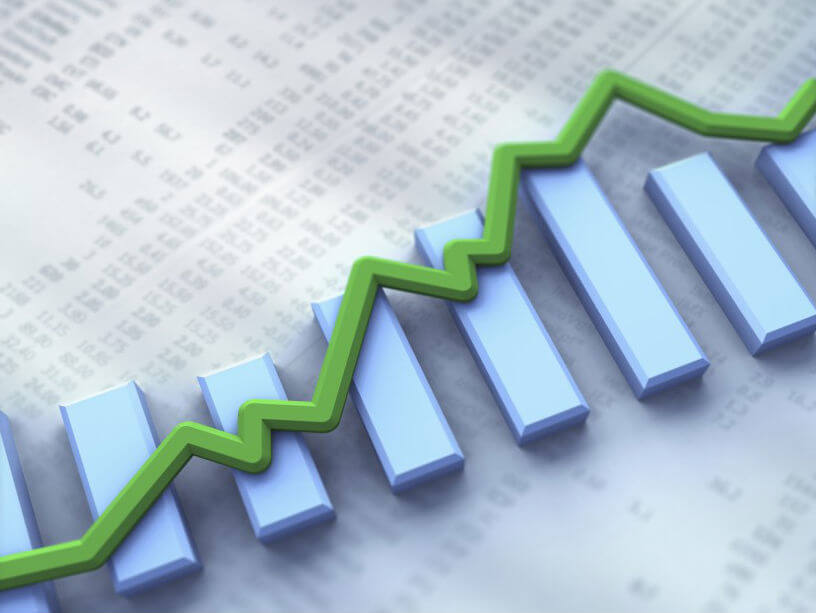Big asset growth = big trouble
Firms with large asset growth tend to underperform the market
Advertisement
Firms with large asset growth tend to underperform the market
 The stock market has a way of crushing the hopes and dreams of investors who buy growth stocks. Problem is, they usually pay far too much for stocks that have grown a great deal only to see them slow down.
While much has been said about earnings growth, academics recently turned their attention to asset growth and the news isn’t good. They figure firms with large asset growth tend to underperform the market.
Professor Kenneth French examined the phenomena. In one study, he split the U.S. stock market into a five by five matrix of 25 portfolios based on size (market capitalization) and 1-year total asset growth (in percentage terms).
The stock market has a way of crushing the hopes and dreams of investors who buy growth stocks. Problem is, they usually pay far too much for stocks that have grown a great deal only to see them slow down.
While much has been said about earnings growth, academics recently turned their attention to asset growth and the news isn’t good. They figure firms with large asset growth tend to underperform the market.
Professor Kenneth French examined the phenomena. In one study, he split the U.S. stock market into a five by five matrix of 25 portfolios based on size (market capitalization) and 1-year total asset growth (in percentage terms).
He first sorted stocks into five groups by size and then split each group into five portfolios by asset growth. Each of the resulting 25 portfolios was held for a year and then the whole process repeated. In this way he was able to track the performance of each slice of the market from July 1963 to March 2015. The results are shown in the table below.
| Annual Performance of U.S. Stocks by Size and Total Asset Growth (%) | ||||||
| Total Asset Growth (%) | ||||||
| Lowest | Low | Middle | High | Highest | ||
| Size | Largest | 14.0% | 12.2% | 12.0% | 10.7% | 7.3% |
| Large | 13.5% | 13.5% | 13.3% | 13.0% | 8.8% | |
| Middle | 15.8% | 16.1% | 14.2% | 14.1% | 7.5% | |
| Small | 13.7% | 15.4% | 15.7% | 15.2% | 6.8% | |
| Smallest | 19.8% | 18.3% | 16.7% | 14.9% | 6.8% | |
| Data Source: Professor Kenneth French, July 1963 to March 2015 | ||||||
As you can see, stocks with the highest asset growth rates underperformed those with lower growth rates. By way of comparison, the market gained 10.0% per year on average over the period and it beat the top asset growers handily.
To get an idea of how much asset growth was too much it is useful to know that stocks in the highest categories had growth rates well north of 30%. (Such out-sized growth was probably the result of corporate actions like mergers.) On the other hand, stocks in the next to highest category had asset growth near 15%, the middle group had rates near 8%. The low growth firms had low single-digit rates of about 2% to 3% while stocks in the lowest category usually saw their assets shrink modestly on a year-over-year basis. Overall, the lesson seems clear. You should shy away from stocks with high 1-year total asset growth while favouring slower growers. In addition, smaller stocks tend to fare better than larger stocks.| Name | Price | P/B | P/E | Earnings Yield | Dividend Yield |
| BCE (BCE) | $53.60 | 4.10 | 19.01 | 5.26% | 4.85% |
| Potash Corp (POT) | $39.15 | 2.88 | 18.30 | 5.46% | 4.67% |
| CIBC (CM) | $95.10 | 2.07 | 13.10 | 7.63% | 4.46% |
| Rogers (RCI.B) | $43.48 | 4.11 | 17.32 | 5.77% | 4.42% |
| Shaw (SJR.B) | $27.18 | 2.69 | 16.28 | 6.14% | 4.36% |
| Bank of Nova Scotia (BNS) | $65.61 | 1.69 | 11.47 | 8.72% | 4.15% |
| Bank of Montreal (BMO) | $78.08 | 1.47 | 12.33 | 8.11% | 4.10% |
| National Bank (NA) | $49.05 | 1.86 | 11.22 | 8.91% | 4.08% |
| TELUS (T) | $42.38 | 3.34 | 17.73 | 5.64% | 3.96% |
| Royal Bank (RY) | $79.17 | 2.23 | 12.59 | 7.94% | 3.89% |
| Source: Bloomberg, May 11, 2015 | |||||
Share this article Share on Facebook Share on Twitter Share on Linkedin Share on Reddit Share on Email